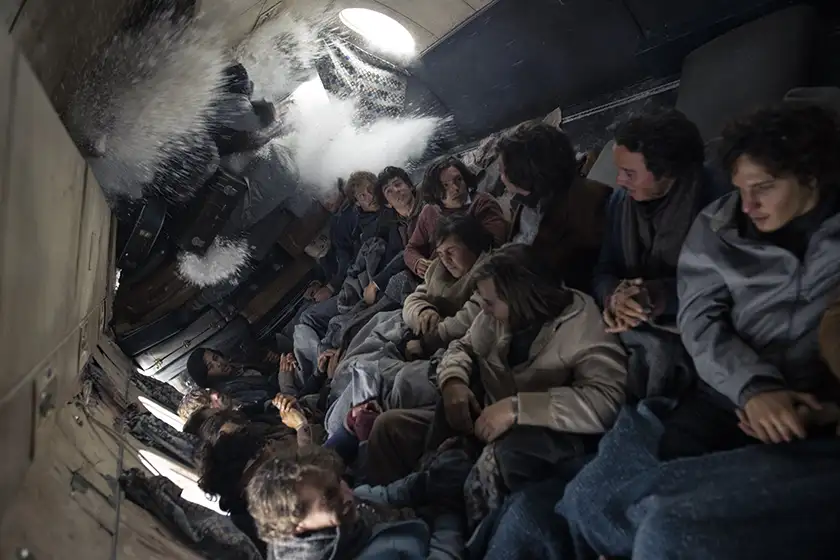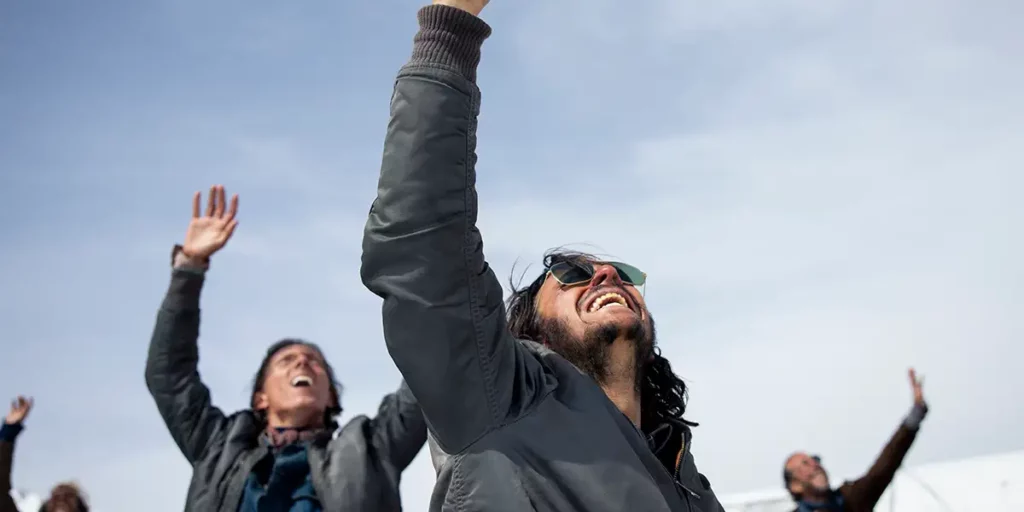J. A. Bayona’s Society of the Snow has some fascinating, suspenseful set pieces but not much psychological insight or emotional heft.
In 2012, J. A. Bayona decided to make a film called The Impossible, based on the true story of the Belon-Alvarez family’s harrowing experiences during the devastating Indian Ocean tsunami in 2004. Eleven years have passed since that project was released in cinemas worldwide. Bayona has his eyes on retelling another story about the testament to the power of the human spirit in the face of disaster. With his latest work, Society of the Snow (La Sociedad de la Nieve), the Spanish filmmaker teams up with author and journalist Pablo Vierci to recount the tale of the Uruguayan Air Force Flight 571 crash survivors. Although Bayona crafts some impressive set pieces that are as suspenseful as they are staggering, he doesn’t develop the characters in a way that brings insight into their psychological and emotional state.
You may have heard about the 1972 incident already, where a plane crashed deep in the heart of the Andes. Aboard that plane was the Old Christian rugby team – a Uruguayan sports club from the Carrasco – alongside some friends and family. Since there were a total of forty-five passengers aboard, Bayona decides to only introduce us to a couple of the rugby players before the accident happened. These men were in their twenties during that time; they had their whole life ahead of them. We hear them talk about what they aim for in life and what they have waiting for them back home.
The person on whom Bayona focuses the most is Numa Turcatti (Enzo Vogrinci), a law student who decided to join the trip at the very last moment – the narrator of this film. Turcatti wasn’t a rugby player or studied at the same college as them. We see everything that transpires through the eyes and voice of an outsider, which helps those who didn’t know about this incident feel more immersed in the story. This flight was meant to be a “last hoorah” of some sort – a quick flight to Chile for their final match together, before they went their separate ways once the trip ended. But tragedy struck, changing the lives of the survivors for good.

Their plane crashed into the snow-covered mountains of the Andes. That sequence is breathtaking and horrifying: it is easily the most impactful and devastating scene in Society of the Snow. The scene makes the viewer extraordinarily anxious, making them feel the rapidly increasing panic. Passengers are falling to their deaths, crushed by the metal seats, and their bones shattering completely by the g-forces. J. A. Bayona has a knack for creating suspenseful and thrilling set pieces, as seen in his acclaimed horror picture The Orphanage and the uneven Jurassic World: Dominion. He knows how to capture the panic that oozes from the characters’ pores and nature’s unforgiving fury. The tsunami sequence in The Impossible was truly astonishing due to the use of practical and visual effects. But he has outdone himself in Society of the Snow.
From a technical standpoint, that scene is one of the best things he has done in his career. Even if it doesn’t last more than five minutes, it stays in your head throughout the entirety of the film. One of the reasons why it is really effective and leaves an impression on the viewer is the work of cinematographer Pedro Luque. His camera placement creates a claustrophobic feeling where you feel every inch of trepidation and hysteria as the plane comes closer to the ground. Out of the forty-five passengers aboard, only twenty-nine survived the crash’s sheer impact. And those survivors now have a bigger challenge on their hands as they face the wrath of nature – the blistering cold feeling like light stabs on their bodies.
As they leave the wreckage, Luque focuses on capturing their horrified reactions, both to what just occurred and the ravishing icy setting. Their faces tell the story; they begin to feel impending doom. Days turn to weeks, and weeks turn to months. Many of them died due to several reasons, whether it was starvation and hypothermia or infections from their injuries caused by the crash and a deadly avalanche, which was shot from the perspective of the victims. We see the physical effects on their bodies and faces via excellent makeup work (Ana López-Puigcerver). Frost-bitten faces, and wounded hands and legs are all over the film, demonstrating how unforgiving that setting is.
The passengers spent seventy-two days trapped in those mountains, recurring to every measure imaginable for survival, even cannibalism. Sixteen lived long enough to get rescued and tell the tale to the world. Narrative-wise, Society of the Snow is constructed in the same manner as Frank Marshall’s 1993 retelling of the same 1972 tragedy, Alive. We see the Old Christian rugby team going through the motions of this endurance test as their faith in surviving the whole thing is far less likely. The difference is the person at the center of the story, which, in this case, is Numa Turcatti. In addition, Society of the Snow fixes a crucial error in the 1993 film. Like The Impossible, Alive has questionable casting choices that whitewash the story. Netflix’s film made sure that the cast consisted entirely of Latino actors, making it feel more authentic and true-to-life in the process.
The problem with J. A. Bayona’s latest is that, while he strives in executing the story’s survival horror elements, he doesn’t give us enough psychological or emotional insight into the characters. And that’s something that happened with Frank Marshall’s film as well. The crux of Bayona’s retelling of this story is the will to survive and conquer the odds. How he explores these themes allows him to create his most humanist picture to date, more so than The Impossible. However, the morals and philosophy behind their decisions in this dire situation – the most interesting topic – are put to the side in exchange for a more crowd-pleasing result. For example, when it comes to the cannibalism that occurred during those seventy-two days, Bayona doesn’t capture what it feels like to reach that level of necessity for survival.
Despite all of these positive aspects in the film’s favor (makeup, cinematography, and suspenseful set pieces), Bayona still doesn’t hook the viewer entirely because of the lack of scenes dedicated to exploring the characters’ psyches. While the Spanish filmmaker does fix some of the crucial mistakes in Frank Marshall’s Alive, the issue regarding the lackluster character development makes its way onto Society of the Snow.
Society of the Snow will be available to stream on Netflix from January 4, 2024.

